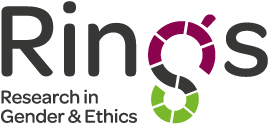10 Best resources on… intersectionality with an emphasis on low- and middle-income countries
To orient readers to intersectionality theory and research, we first define intersectionality and describe its role in public health, and then we review resources on intersectionality. We found that applications in public health mostly increased after 2009, with only 14 out of 86 articles focused on LMICs. To arrive at 10 best resources, we selected articles based on the proportion of the article that was devoted to intersectionality, the strength of the intersectionality analysis, and its relevance to LMICs.
The first four resources explain intersectionality as a methodology. The subsequent six articles apply intersectionality to research in LMIC with quantitative and qualitative analysis. We provide examples from India, Swaziland, Uganda and Mexico. Topics for the studies range from HIV, violence and sexual abuse to immunization and the use of health entitlements. Through these 10 resources, we hope to spark interest and open a needed conversation on the importance and use of intersectional analysis in LMICs as part of understanding people-centred health systems.
